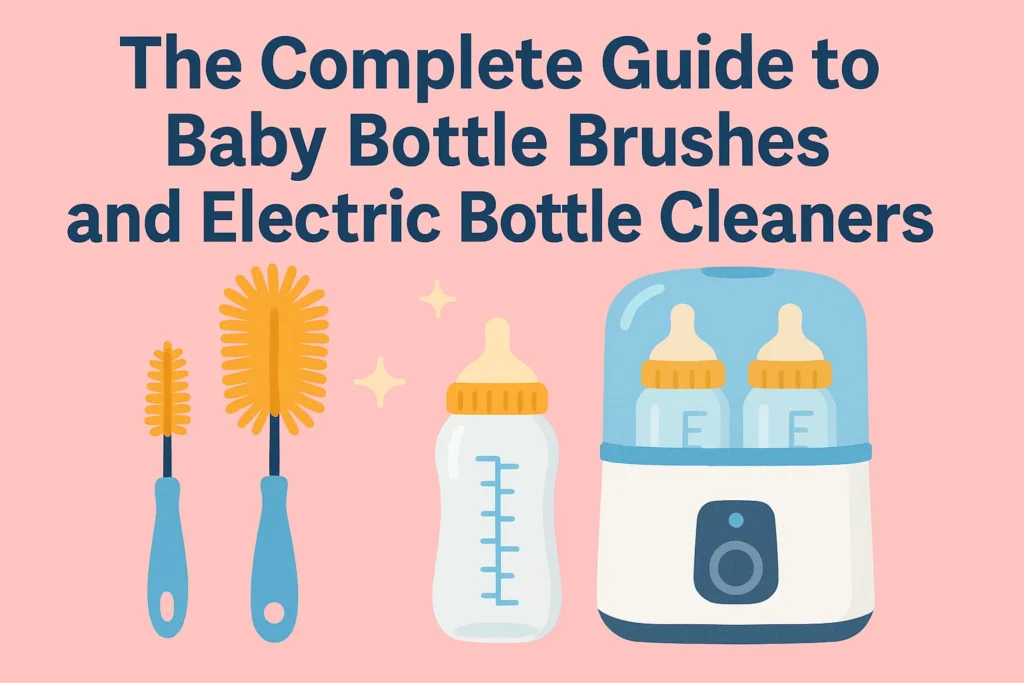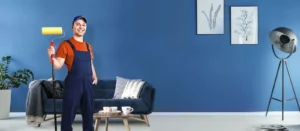
Caring for your baby goes far beyond feeding schedules and nap times it extends to every little detail, including how you clean their bottles. For parents, keeping feeding equipment spotless is a must, not just for hygiene but also for peace of mind. That’s why tools like the baby bottle brush and the electric bottle cleaner have become household essentials.
But with so many cleaning options available today, how do you know which one suits your needs best? Should you stick with the tried-and-true bottle brush, or switch to a more advanced electric cleaner? This guide will walk you through both choices in detail, highlighting their features, uses, and how they fit into everyday parenting.
Why Bottle Cleaning Matters So Much
Before diving into specific tools, let’s pause on the “why.” Babies are more vulnerable to germs because their immune systems are still developing. Milk residue, even when invisible, can quickly breed bacteria if not removed properly.
That’s where cleaning tools make all the difference:
- They reach deep into bottle corners where sponges can’t.
- They scrub away stubborn milk film.
- They help maintain bottles for longer use without scratches or odors.
Simply rinsing isn’t enough regular, thorough cleaning is non-negotiable.
The Baby Bottle Brush: A Classic Essential
A baby bottle brush has long been a parent’s go-to tool for cleaning. It’s simple, affordable, and effective. But not all brushes are created equal.
Features That Make a Baby Bottle Brush Effective:
- Soft Bristles – Gentle enough to clean without scratching plastic or glass bottles.
- Nipple Cleaner Tip – Many brushes include a smaller attachment to clean nipples.
- Ergonomic Handle – A comfortable grip makes cleaning less of a chore.
- Flexible Neck – Helps reach into narrow or curved bottles.
Advantages of a Baby Bottle Brush:
- Budget-friendly and easy to replace.
- Compact for travel or quick washes.
- Doesn’t require power or setup.
Common Mistakes to Avoid:
- Using the same brush for months—bristles wear down and harbor bacteria.
- Leaving brushes damp, which leads to mold.
- Not cleaning the brush itself regularly.
Tip: Replace your baby bottle brush every 1–2 months, or sooner if it shows wear.
The Electric Bottle Cleaner: Modern Help for Busy Parents
While brushes are reliable, modern parenting tools now include the electric bottle cleaner, designed to save time and effort. These devices automate the scrubbing and rinsing, giving you bottles that are consistently cleaned with minimal manual work.
How an Electric Bottle Cleaner Works:
Most models use rotating brushes or water jets powered by electricity. Some combine cleaning and sterilizing functions, making them a 2-in-1 solution.
Advantages of an Electric Bottle Cleaner:
- Time-Saving: Perfect for parents juggling multiple tasks.
- Consistent Cleaning: Reduces human error every wash is thorough.
- Multifunctional: Some include drying or sterilizing features.
- Less Strain: No scrubbing means less hand fatigue, especially with frequent cleaning.
Things to Consider Before Buying:
- Size and counter space in your kitchen.
- Maintenance—filters or parts may need cleaning too.
- Power source—some are battery-operated, others plug into outlets.
Baby Bottle Brush vs. Electric Bottle Cleaner: A Side-by-Side Look
| Feature | Baby Bottle Brush | Electric Bottle Cleaner |
|---|---|---|
| Cost | Low, easily replaced | Higher upfront investment |
| Ease of Use | Manual effort required | Automated cleaning process |
| Portability | Small, lightweight, travel-friendly | Less portable, kitchen-use only |
| Cleaning Power | Depends on effort and technique | Consistent and thorough |
| Best For | Quick, on-the-go washes | Busy parents with high bottle usage |
Which One Should You Choose?
It depends on your lifestyle:
- If you’re often on the go, a baby bottle brush is essential. It’s light, fits in any diaper bag, and is great for quick washes.
- If you wash several bottles a day, or value convenience, an electric bottle cleaner can save you time and energy.
Some parents even use both: the brush for travel or emergencies, and the electric cleaner at home.
Step-by-Step Guide: How to Clean Baby Bottles Properly
No matter which tool you use, the method matters. Here’s a simple routine:
- Rinse Immediately – After feeding, rinse bottles with warm water to prevent milk from sticking.
- Scrub Thoroughly – Use a baby bottle brush or load bottles into the electric bottle cleaner. Pay extra attention to nipples.
- Rinse Again – Ensure no soap residue remains.
- Air Dry – Place bottles on a clean drying rack, not a towel (to avoid germs).
Read: Electric Bottle Brush You Should Need to Know About
Hygiene Tips for Cleaning Tools
- Sanitize Regularly: Soak bottle brushes in boiling water once a week.
- Replace Brushes Often: Worn bristles don’t clean effectively.
- Maintain Electric Cleaners: Clean filters and detachable parts as instructed.
- Store Properly: Keep tools in dry areas to avoid mold growth.
Future Innovations in Bottle Cleaning
As parenting tools evolve, expect to see:
- Smart electric bottle cleaners with app integration for cleaning cycles.
- Eco-friendly brushes made of bamboo or recycled materials.
- Compact travel-sized electric cleaners for parents on the move.
These innovations aim to make cleaning even safer, quicker, and more sustainable.
Final Thoughts
Both the baby bottle brush and the electric bottle cleaner play important roles in keeping your baby’s feeding gear spotless. The brush remains a simple, reliable tool, while electric cleaners bring convenience to busy households.
Ultimately, the choice isn’t about one versus the other it’s about what works best for your daily routine. Many parents find having both on hand is the smartest solution.
Keeping bottles clean may seem like a small task, but it adds up to a healthier, happier feeding experience for your little one—and peace of mind for you.
FAQs
1. How often should I replace a baby bottle brush?
You should replace a baby bottle brush every 1–2 months or sooner if the bristles are worn, discolored, or have an odor.
2. Are electric bottle cleaners safe for baby bottles?
Yes. Electric bottle cleaners are designed to clean bottles safely and thoroughly. Always follow the manufacturer’s instructions for best results.
3. Can I use both a baby bottle brush and an electric bottle cleaner?
Absolutely. Many parents use a baby bottle brush for travel or quick washes and rely on an electric bottle cleaner at home for convenience.
4. Do electric bottle cleaners sterilize bottles?
Some electric bottle cleaners include sterilizing and drying features, while others focus only on cleaning. Check the model specifications before buying.
5. What’s the main difference between a baby bottle brush and an electric cleaner?
A baby bottle brush requires manual scrubbing, while an electric cleaner automates the process for consistent, hands-free cleaning.




